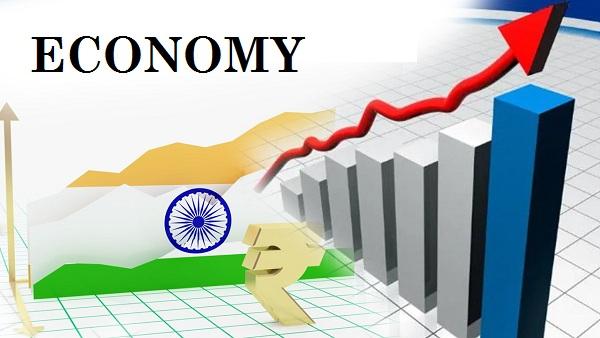The Indian economy grew at a slower-than-anticipated 4.4% in the October-December 2022 quarter due to a contraction in manufacturing and low growth in consumption. However, the Indian economy is still expected to grow by 7% in 2022-23, according to GDP data released by the National Statistical Office (NSO) on Tuesday.
First, the Indian economy performed worse than anticipated in the previous quarter; second, it will (need to) perform much better than expected in the current quarter; and third, it performed much better than NSO’s own numbers suggested in the previous three years.
The December-ending quarter’s 4.4% expansion was less than the 4.7% expansion predicted by a Bloomberg survey of economists. However, the second advance estimates for 2022-23 have maintained the 7% growth projection from the January 6 release of the first advance estimates. This implies that the Indian economy will gain rather than lose growth momentum in the quarter concluding in March 2023 – GDP growth must be 5.1% in the March 2023 quarter for the 7% annual growth figure to materialise.
Noting that the ministry of statistics and programme implementation (MoSPI) has “maintained the real GDP growth forecast for the current fiscal year at 7%,” chief economic adviser (CEA) V Anantha Nageswaran stated that this is “very realistic” and India remains a bright spot among “large-sized economies” with relatively higher GDP growth and low CPI inflation. According to him, the potential upside consists of stable economic fundamentals of the Indian economy and limited repercussions from the current Covid-19 surge in China. The IMF’s World Economic Outlook predicts that global growth will decelerate from 3.4% in 2022 to 2.9% in 2023. He also cited synchronised monetary tightening, adverse spillovers from the prolonged strains on supply chains, and uncertainty due to ongoing geopolitical conflict as downside risks.

In light of the increasing headwinds facing the economy, analysts believe it is counterintuitive for the current quarter’s development momentum to increase. In a resolution dated December 7, 2022, the Monetary Policy Committee (MPC) of RBI projected GDP growth rates of 4.4% and 4.2% for the quarters ending in December 2022 and March 2023, respectively. The February MPC made no growth projections for the December 2022 and March 2023 quarters and took the NSO’s 7% growth forecast for 2022-23 as a given.
Additionally, GDP growth figures for prior years have been revised based on statistics released by NSO on February 28. The GDP growth rates for 2019-2020, 2020-2021, and 2021-2022 have been increased from 3.7%, -6.6%, and 8.7% to 3.9%, -5.6%, and 9.1%, respectively. The revised number for 2020-21 indicates that the NSO’s first advance estimate (released on January 7, 2021) for the pandemic-induced contraction was nearly two percentage points too high.
“The lower-than-anticipated quarterly numbers have been muddled by sharp data revisions, which are typically seen with the release of this print each year; we had seen the same magnitude of revisions in the previous two years, which were affected by Covid disruptions,” said Madhavi Arora, lead economist at Emkay Global Financial Services.
The historical revision of past GDP data in NSO’s most recent release also implies that in absolute terms, real GDP in 2022-23 will be 159.7 lakh crore, which is nearly 2 lakh crore more than what was projected in the first advance estimate released on January 6, 2023. This will also result in a slight rise in GDP per capita, which is projected to be 1,15,490 in 2022-23, up from 1,13,968 in the first advance estimates.
Beyond the revised numbers, analysts highlight areas of concern in the data for the quarter: Private final consumption expenditure (PFCE) grew by only 2.1% in the quarter ending in December 2022. During the third quarter of 2022, this figure was 8.8%. In December 2022, the manufacturing industry contracted annually for the third consecutive quarter, making it the third quarter of the year 2022. Even though services continue to be the primary driver of global development, momentum is waning even in this sector. The development of the services sector slowed from 9.4% in the September quarter of 2022 to 6.2% in the December quarter of 2022. Gross Fixed Capital Formation (GFCF), a measure of economic investment activity, increased by an impressive 8.3% in the fourth quarter. Certainly, even GFCF has experienced a decline in growth since September 2022, when it was 9.8%. Gross Value Added (GVA) growth in the December quarter of 2022 was 4.6%, indicating that production net of taxes grew faster than GDP as a whole. While GVA growth typically trails GDP growth, in 18 of the 43 quarters for which data is available under the current series, GVA growth has exceeded GDP growth. In absolute terms, the December 2022 GDP figure is higher than the corresponding GVA number.
Also read: 2 CISF officers convicted for gold smuggling
“India’s economy continues to perform well in key private services and agriculture, while manufacturing is the only sector with a discernible weakness…
However, for FY23-24, we continue to anticipate a gentle landing for the economy as tighter monetary conditions and still-elevated inflation take their toll,” said Rahul Bajoria, MD & head of EM Asia (ex-China) Economics at Barclays. Analysts believe that the most recent NSO data will contribute to the already growing hawkish monetary policy sentiment and increase the likelihood of yet another rate hike at the April meeting of the RBI’s monetary policy committee. “Today’s growth rate is broadly consistent with RBI’s own projections and is unlikely to significantly alter RBI’s projections. In light of the hawkish minutes and the January inflation excess, we believe the balance of risks has shifted in favour of another rate hike. We anticipate a 25bp hike in April despite the MPC’s sustained dissent”, Bajoria added in his note.




